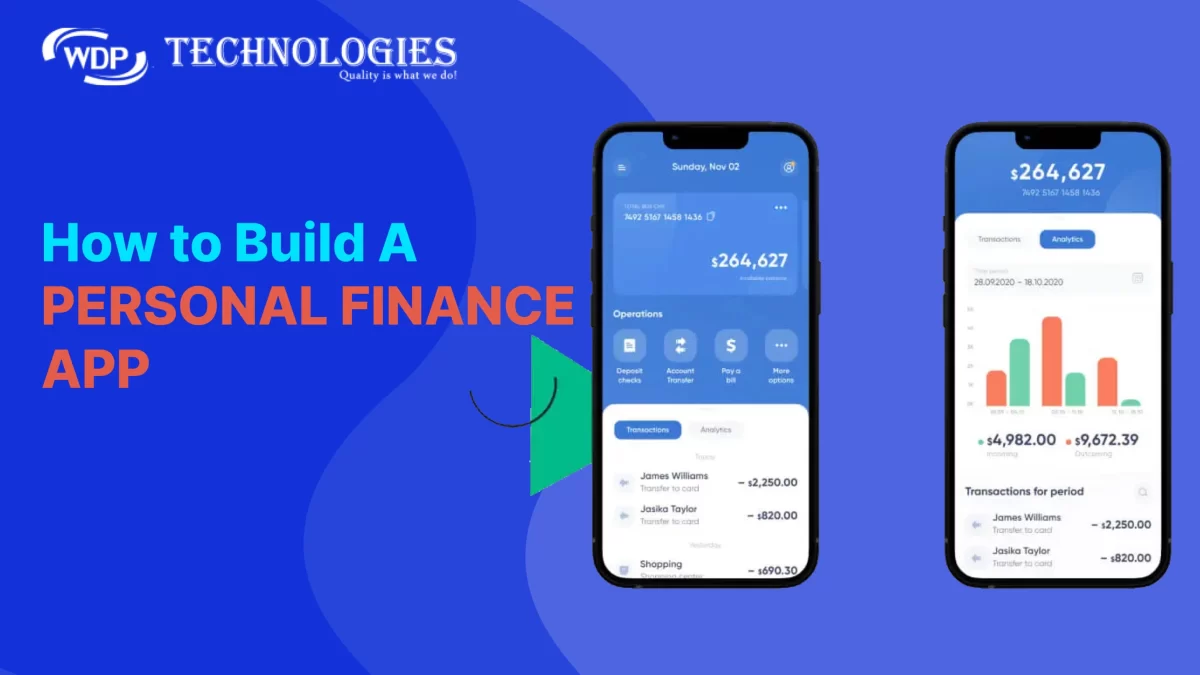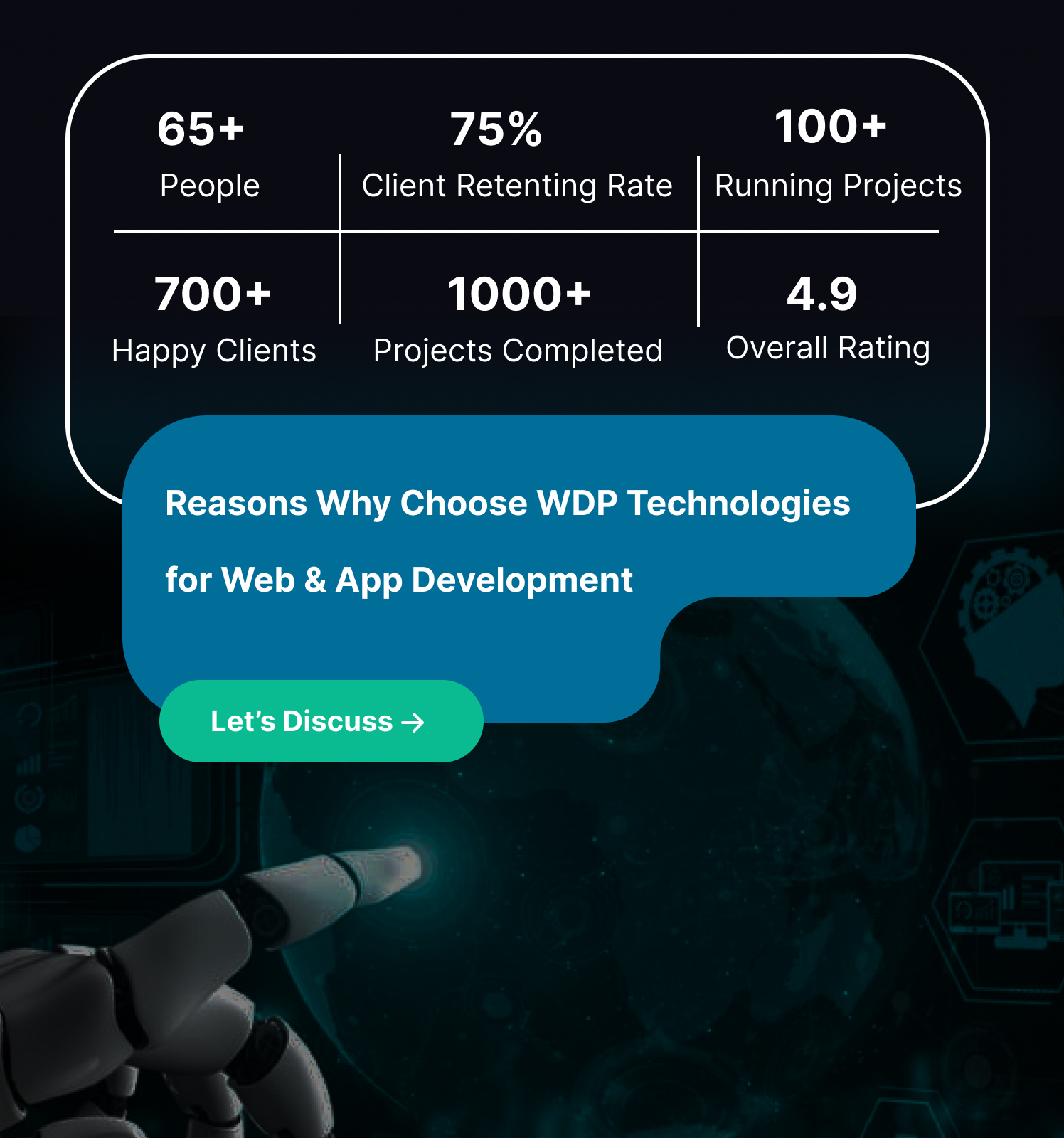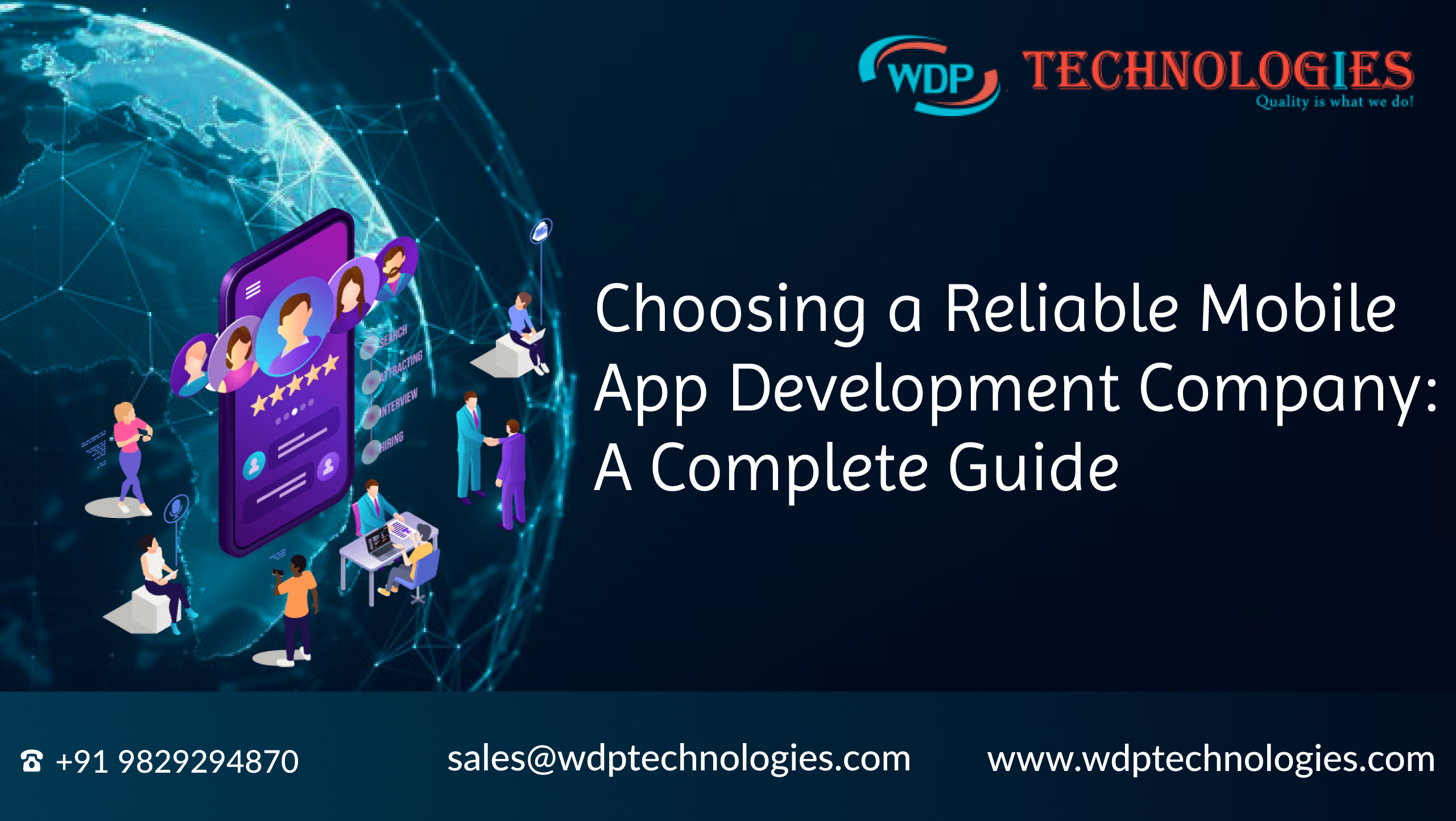Hey there! Ever wondered how you can manage your money better with just a few taps on your phone? Well, that’s the magic of personal finance apps! These nifty tools are like digital sidekicks, helping you budget, invest, and plan for the future—all from the comfort of your smartphone.
In this blog, we’re going to break down everything you need to know about creating these cool personal finance apps. From the essential features that make them tick to the challenges developers face, we’ll take a casual stroll through the world of personal finance app development.
So, buckle up! We’re about to explore the ins and outs of personal finance apps and discover how they’re changing the way we handle our money in the modern age. Let’s dive in and make finance fun.
Overview of Personal Finance App
Financial literacy and responsible money management are crucial life skills, yet many find them daunting. Thankfully, technology offers a helping hand in the form of personal finance apps. These handy tools have become increasingly popular, empowering individuals to take control of their finances and achieve their financial goals.
But what exactly are personal finance apps? Simply put, they’re software applications designed to help you manage your money effectively. They offer a range of features to:
🔹Track income and expenses: Categorize transactions, visualize spending patterns, and gain insights into where your money goes.
🔹Create and track budgets: Set realistic spending limits, monitor progress, and stay on top of your financial goals.
🔹Manage bills and reminders: Never miss a due date with automated bill pay features and handy reminders.
🔹Plan for the future: Set saving goals for various purposes, track progress, and stay motivated on your journey.
🔹Invest and grow wealth: Some apps offer investment tracking and portfolio management tools.
Market Stats of Personal Finance App
The global personal finance app market is on a trajectory to reach $1.58 billion by 2027, growing at a robust CAGR of 5.7%, as per Allied Market Research. In 2021, over 573 million mobile finance app downloads were recorded in the US alone, illustrating a significant surge in user adoption (Statista). Established players like Mint, YNAB, and EveryDollar continue to dominate, while newcomers like Prism and PocketGuard bring innovation.
This growth is not just about downloads but reflects user engagement and retention, driven by technological advancements and diverse user demographics. As personal finance apps evolve, they are set to redefine how individuals manage their finances in the digital age, presenting exciting opportunities for users and developers alike
How to Build a Personal Finance Application?
Building a personal finance application requires a strategic approach and a careful consideration of various aspects. Here’s a step-by-step guide to help you navigate the process:
1) Market Research:
Conduct thorough market research to gain insights into the competitive landscape of personal finance apps. Identify and analyze competitors to understand their strengths and weaknesses. This analysis helps you pinpoint opportunities for differentiation and innovation within the market, guiding the development of features that set your app apart from the rest.
2) Choose Core Features:
Define the essential features your personal finance app will offer, ranging from budgeting tools and expense tracking to investment management and goal setting. Prioritize these features based on user needs and market demand. Aligning your app’s capabilities with user expectations ensures that it meets the diverse financial management requirements of your target audience.
3) Design the UI/UX:
Craft an intuitive and visually appealing user interface that resonates with your target audience’s preferences. Ensure the design facilitates easy navigation and provides a positive overall user experience. Validate your design choices by testing prototypes with potential users, incorporating their feedback to enhance usability and satisfaction.
4) Select Right Technology Stack:
Choose a suitable technology stack, considering both backend and frontend technologies. Prioritize scalability, security, and seamless integration capabilities. The right technology foundation ensures your app’s long-term success and adaptability to future advancements.
5) Ensure Security & Compliance:
Implement robust security measures to protect user financial data from potential threats. Adhere to data protection regulations and integrate encryption protocols to maintain user trust and comply with legal requirements. Prioritizing security is crucial for fostering user confidence in your app.
6) Integrate with Financial Institutions:
Establish secure connections with banks and financial institutions to enable real-time data retrieval. Ensure seamless integration with various financial platforms, providing users with accurate and up-to-date financial information. This integration enhances the app’s functionality and utility.
7) Implement Budgeting & Expense Tracking:
Develop features that empower users to create budgets and track expenses effectively. Include customizable categories and insightful spending pattern analyses to assist users in managing their finances more efficiently.
8) Incorporate Investment Management Tools:
If applicable, integrate features for managing investments and tracking portfolio performance. Provide real-time market data and investment recommendations, assisting users in making informed financial decisions aligned with their goals.
9) Develop Goal Setting & Tracking Features:
Implement tools that enable users to set financial goals and track their progress over time. Integrate visualizations and notifications to motivate users, fostering a sense of achievement as they work towards their financial objectives.
10) Implement Notifications & Reminders:
Incorporate features for bill payment reminders and alerts to notify users about exceeding budget limits. Enhance user engagement by providing timely and relevant notifications, keeping users informed about their financial activities.
11) Test Extensively:
Conduct thorough testing across functionalities, security aspects, and user experience. Identify and address any bugs or issues, and gather valuable feedback from beta testing to refine your app before its official launch.
12) Launch and Monitor:
Officially launch your personal finance app on relevant platforms, such as iOS and Android. Monitor user feedback and app performance post-launch, promptly identifying areas for improvement and addressing any issues that may arise.
13) Focus on Marketing & User Education:
Develop a robust marketing strategy to promote your app and effectively reach your target audience. Provide educational resources within the app to guide users on its functionalities, ensuring they can make the most of its features and functionalities.
14) Continuously Improve:
Gather ongoing user feedback and analytics to identify areas for improvement. Implement regular updates to add new features, enhance security, and improve the overall user experience. This ensures your app remains competitive and relevant in the dynamic and evolving personal finance app landscape.
Cost for Personal Finance App Development
The cost for personal finance app development isn’t a one-size-fits-all answer. It dances between modest and substantial, waltzing with features, platform choices, development teams, and even their location. A basic app with features like budgeting and tracking could cost $35,000-$75,000, while a sophisticated one with bill pay, investments, and advanced security might touch $180,000 or more.
Remember, these are mere estimates. To truly know your number, prioritize features, choose between freelancers or agencies, and research developer rates based on your desired expertise. Remember, cost is just one step in the dance. Consider your target audience, prioritize user experience, and plan a sustainable monetization strategy. With careful planning and a focus on value creation, your app can become a financial rockstar, empowering users and conquering the market!
Essential Features Require for Personal Finance App
In the competitive world of personal finance apps, standing out requires more than just a fancy logo. To truly empower users and capture their attention, your app needs a solid foundation of essential features. Here are the must-haves that shouldn’t be missing:
a. Financial Tracking & Management:
- Easy Transaction Recording: Users should effortlessly add income and expenses, categorize them efficiently, and schedule recurring transactions.
- Intuitive Reporting & Visualization: Generate clear reports and insightful graphs to visualize spending patterns, identify areas for improvement, and track progress towards goals.
- Flexible Budgeting Tools: Allow users to create customized budgets across categories, set spending limits, and receive real-time notifications when nearing them.
b. Goal Setting & Tracking:
- Define S.M.A.R.T. Goals: Help users set specific, measurable, achievable, relevant, and time-bound financial goals to stay motivated.
- Track Progress & Milestones: Provide visually appealing progress bars, celebrate milestones, and offer personalized reminders to keep users engaged.
- Goal Collaboration (Optional): Enable couples or families to set and track shared financial goals, fostering transparency and teamwork.
c. Bill Management & Reminders:
- Centralized Bill Management: Aggregate bills from various sources, display due dates prominently, and offer convenient bill pay options (if applicable).
- Automated Reminders & Alerts: Set reminders for upcoming bills and overdue payments to avoid late fees and maintain financial peace of mind.
- Subscription Tracking (Optional): Help users identify and manage recurring subscriptions, allowing them to cancel unused ones and optimize spending.
d. Financial Literacy & Education:
- Personalized Insights & Tips: Offer relevant financial insights based on user data and spending habits, encouraging informed decision-making.
- Financial Articles & Resources: Integrate educational content or partner with financial experts to provide users with relevant learning opportunities.
- Goal-Focused Tips & Guides: Offer targeted tips and guides tailored to specific financial goals, empowering users to make informed choices.
e. Security & Privacy:
- Robust Data Encryption: Employ industry-standard encryption protocols to protect user data and ensure financial security.
- Multi-Factor Authentication: Offer multi-factor authentication options to strengthen login security and prevent unauthorized access.
- Transparent Privacy Policy: Clearly communicate data collection practices and provide users with control over their information.
Remember, this is just a starting point. Tailor these features to your target audience and their specific needs, add unique functionalities, and prioritize a user-friendly interface for ultimate impact. By combining essential features with innovative touches, your personal finance app can become a true financial companion, guiding users towards their goals and securing their financial well-being.
Top Performers in Personal Finance App Domain
Here are some of the top performers in the personal finance app domain, categorized by their niche:
1. Mint:
Owned by Intuit, Mint aggregates financial accounts and transactions from various sources, providing users with a comprehensive overview of their finances. It also offers budgeting tools, bill pay reminders, and credit score monitoring.
2. PocketGuard:
This app focuses on helping users avoid overspending by showing them how much money they have left to spend after accounting for bills and other fixed expenses. It also offers bill pay features and personalized spending insights.
3. YNAB :
YNAB is acclaimed for its proactive budgeting approach. It focuses on allocating funds to specific categories and encourages users to give every dollar a job. YNAB’s user-friendly interface and emphasis on financial education contribute to its popularity.
4. Acorns:
Acorns helps users invest their spare change automatically by rounding up purchases to the nearest dollar and investing the difference in a diversified portfolio of ETFs. It also offers a robo-advisor service for more sophisticated investors.
5. Rocket Money:
Formerly known as Rocket Mortgage, Rocket Money helps users track their spending, pay bills, and negotiate lower interest rates on their debt. It also offers a savings feature to help users build an emergency fund.
Benefits of Personal Finance App
A personal finance app offers numerous advantages for users looking to manage their finances more effectively. Here are some key benefits:
1. Budgeting & Expense Tracking:
Helps users create and stick to a budget by tracking income and expenses. This awareness can lead to better financial planning and savings.
2. Financial Goal Setting:
Allows users to set and track financial goals, such as saving for a vacation, paying off debt, or building an emergency fund. The app provides insights into progress and milestones.
3. Transaction Categorization:
Automatically categorizes transactions, providing a clear breakdown of spending patterns. Users can identify areas where they can cut back or optimize their spending.
4. Real-Time Financial Insights:
Provides instant access to financial data, allowing users to make informed decisions on the go. Real-time insights help users stay aware of their financial health.
5. Account Aggregation:
Aggregates financial information from various accounts, including bank accounts, credit cards, and investments, providing users with a comprehensive view of their financial situation.
6. Credit Score Monitoring:
Offers tools to monitor and track credit scores. Users can receive alerts and tips on improving their credit, which is crucial for financial stability.
7. Automated Bill Payments:
Allows users to set up automated bill payments, reducing the risk of late fees and ensuring bills are paid on time. This can positively impact credit scores.
8. Financial Education:
Provides educational content on various financial topics, empowering users with knowledge on budgeting, investing, and managing debt.
9. Security & Fraud Protection:
Implements robust security measures to protect users’ financial data. Additionally, many apps offer features like transaction alerts and two-factor authentication to enhance security.
10. Investment Tracking:
Enables users to monitor their investment portfolios, track market trends, and make informed decisions about their investments.
11. Savings Automation:
Offers features like round-up transactions, where spare change is automatically saved or invested, promoting a consistent savings habit.
12. Tax Planning and Reporting:
Assists users in tax planning by providing insights into deductible expenses and generating reports that simplify the tax filing process.
13. Accessibility and Convenience:
Allows users to access their financial information anytime, anywhere, providing convenience and fostering a proactive approach to money management.
How to Monetize a Personal Finance App?
Monetizing a personal finance app can be achieved through various strategies. Here are some common ways to generate revenue from your app:
a. Subscription Model:
Offer premium features or advanced functionalities through a subscription plan. Users can pay a monthly or annual fee to access exclusive content, personalized financial advice, or advanced budgeting tools.
b. Freemium Model:
Provide a basic version of your app for free and offer a premium version with extra features or an ad-free experience for a fee. This allows users to experience the app before committing to a paid subscription.
c. In-App Purchases:
Allow users to purchase additional features, tools, or resources within the app. This could include in-depth financial reports, investment analysis tools, or access to premium educational content.
d. Affiliate Marketing:
Partner with financial institutions, investment platforms, or other relevant businesses as affiliates. Earn a commission for every user who signs up or makes a purchase through your app. Ensure transparency and provide value to your users to maintain trust.
e. Advertising:
Display targeted advertisements within your app. Ad revenue can be generated through various ad formats, such as banners, interstitials, or native ads. Ensure that ads are relevant to your users to enhance engagement.
f. Data Monetization:
Aggregate and anonymize user data to provide insights or trends to financial institutions or market research companies. Ensure strict adherence to privacy laws and policies to maintain user trust.
g. Partnerships & Sponsorships:
Collaborate with financial institutions, insurance companies, or other relevant businesses for partnerships or sponsorships. You can offer co-branded content, exclusive deals, or integrate their services into your app for mutual benefit.
h. White Labeling:
License your app to other businesses or institutions that may want to offer a personal finance tool to their customers. This can be a B2B monetization strategy where other organizations pay for the use of your app under their branding.
i. Consultation & Coaching Services:
Offer premium one-on-one financial consultations or coaching sessions within the app. Users can pay for personalized advice or assistance with their financial goals.
j. Crowdfunding or Crowdsourcing:
Consider crowdfunding from your user base to support app development or to introduce new features. This model involves directly asking your users to contribute to the app’s growth and improvement.
Start Your Personal Finance App Development Project with WDP
Now that you know the important features, the next step is to develop a personal finance app. Build a personal finance app can be tough due to competition and security concerns. However, working with an experienced company like WDP Technologies can make the process smoother. They are experts in fintech app development and can help turn your ideas into a real app with advanced features and a great user experience for managing money.
Conclusion
As the demand for effective personal finance management continues to surge, the development of innovative personal finance apps presents a lucrative opportunity. By understanding the intricacies of the personal finance app development process, addressing challenges, and drawing inspiration from successful case studies, developers can create impactful solutions that empower individuals to take control of their financial futures.












